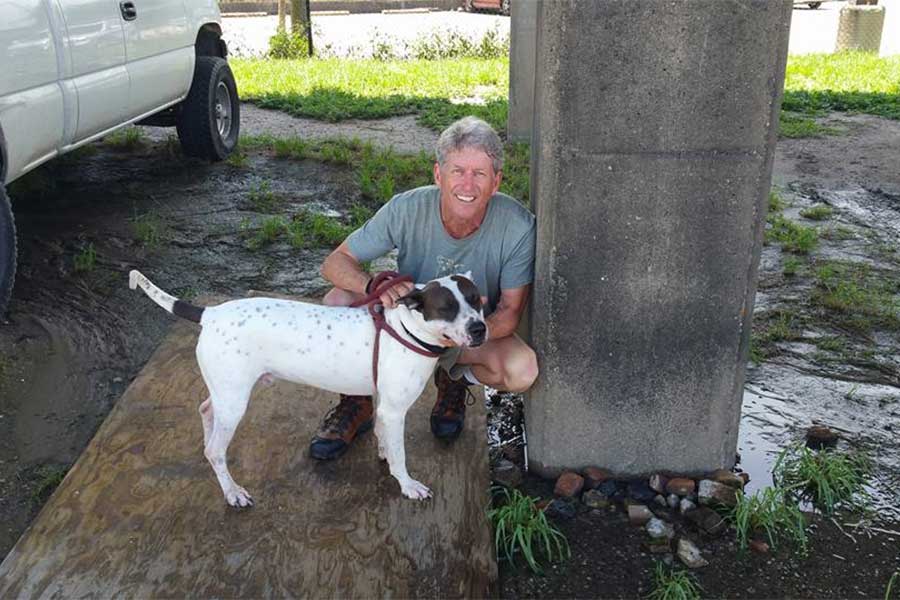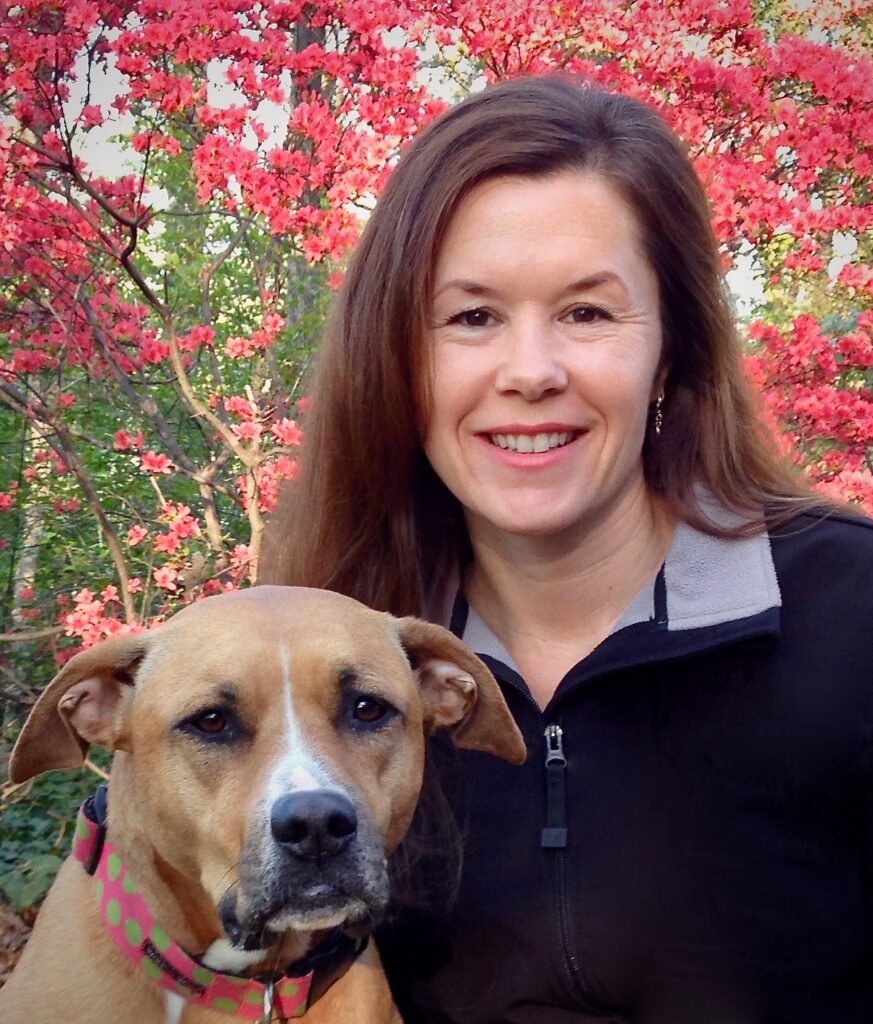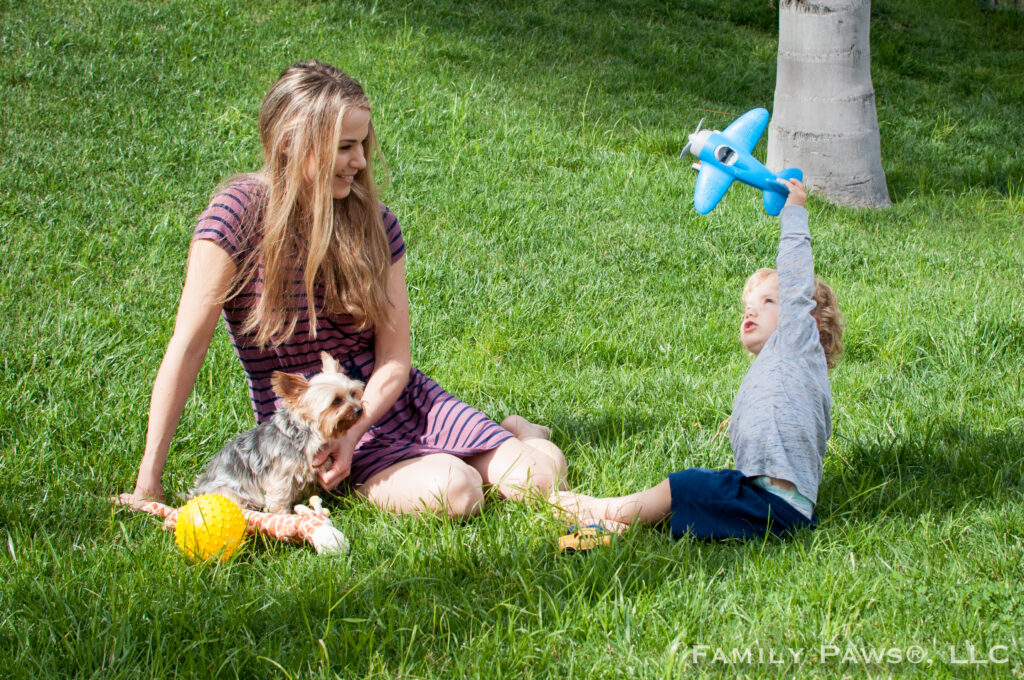by Chris Reeder Young | photos courtesy of Phelan, Lane, and Perry
Who Saved Who?
For those who have rescued pets and companion animals, we know the joy they bring to our homes and hearts.
We understand that it takes basic training and veterinary care to support our pets so they can safely blend and thrive with humans and whatever menagerie of critters we host in our home. We also understand that human conditions like access to health, access to income, and housing can impact a person’s ability to manage and sustain care for a companion animal.
What if, despite all of our good intentions, your companion dog “doesn’t like” your spouse, family members, children, or other pets? What if the humans in your home trigger fear-based signals in your pet like growling, nipping, or biting?
How can humans learn to appropriately manage these instances so that your companion animals and your humans are coexisting happily?
A National Issue
Out of the millions of dogs and cats that are adopted in the U.S, almost 10% of adoptees are returned to the shelter each year. The ASPCA Rehoming Survey found that 47% of dogs and 42% of cats are rehomed to friends, family, or to external networks. Reasons why pets are rehomed or returned will vary but can include: unwanted pet behaviors; pet health issues; birth of new infants; or; inability to manage grown dogs adopted as puppies.
Nobody wants to return or rehome a pet so being trained to learn the language barriers between our pets and the humans is the key to reducing rehoming, shelter returns, injuries, and improving quality of life for both our beloved pets and family members.
The best recommendation to encourage safe and happy households for pets and humans alike is to get help from an animal trainer through one-on-one help or classes. Luckily, Memphis has several incredible trainers and behaviorists!
The Specialists: Lee, Jennie, and Colleen

Lee Phelan is a Certified Professional Dog Trainer-Knowledge Assessed (CPDT-KA®) with the Humane Society of Memphis and Shelby County. His training is backed by an official organization and long-time learning commitment to skilled mentors like Pat Miller, Temple Grandin, Karen Pryor, and a body of applied dog training literature.
“As the public becomes more aware of dog behaviors through science and various studies, we have better ways to train dogs, and the CPDT-KA designation is a reflection of time, commitment, and attention to assure training is done right.”
Lee’s role at the Humane Society is to create environments through and other forms of enrichment training that reduces stress for shelter dogs and prepares them for adoption. He shares, the “greatest predictor of a dog not being returned is making sure they are trained. Everyone at the shelter is a trainer, and we document modifications in all of the dogs we train and work together. We offer a 6-week class to people who adopt from us for a small fee, and it hopefully furthers their adoptability so we can help
dogs have better days to do their dog thing.”
When it comes to managing dog-human interactions in the households, Lee shares that “it is important to understand what it is in their environment that is causing stress and to understand their social signaling of this stress through their body language. This emotional state is communicated to us though overt behaviors, some obvious like tail tucks, growling, and biting, and some subtle like a paw lift, lip licking, looking away and whale eyeing.”
Being able to understand what dogs are telling us is important when encouraging pup-people harmony in your home.
Triggers, Signaling, Desensitization, and Reinforcement
Being able to identify triggers for dogs and their social signals is a large part of encouraging coexistence and reducing rehoming. Sometimes dogs respond to people as triggers simply because they lack socialization. Lee highlights that “dogs have a window from about 2 to 16 weeks where they are very open to new experiences and want to investigate everything. After that window closes, new things or new people could be startling.”

Jennie Lane is an Associated Certified Applied Animal Behaviorist and owner of Synergy Animal Behavior who works to improve the lives of pets and the people who love them through positive reinforcement and behavior modification training. Jennie specifies that “when dogs avoid, act fearful, or behave aggressively toward some people, it is usually but not always, for one of the following reasons: lack of socialization (pleasant emotional experiences) with similar people or a history of unpleasant experiences with similar people.” From both specialist perspectives, paying attention to what your dog is telling you is critical.
In some households, dogs may prefer one person for another. Lee shares that in most cases, the dog may have an affinity to one person to another because the pup has more of a positive reinforcement history with that person or person like them. Much like the dog’s evolutionary wolf ancestors, which person has the dog trained the best?
Pup-people peace also requires understanding how to approach dogs and how to help desensitize a trigger by adjusting the proximal distance at which dogs are exposed to things that upset them. “They are giving us the same signals they would give to other dogs. They will teach you these things, if you know how to listen,” Lee shares. During training, it is important for dogs to not exceed their arousal threshold so much that they get overly worked up and the opportunity for positive reinforcement and learning are lost. Much like triggered humans, panic and cortisol surges can impact our ability to keep ourselves together. We lose our appetite, have fight or flight syndrome, and can’t focus. “This is much like it is for dogs too, Lee shares, “we want to carefully and gradually expose them to triggers systematically and proximally and keep them at less-than threshold arousal levels to train properly”. Much like humans, dogs carry a lot of experiences, good and bad, and require a great deal of time and patience. Jennie reminds us that some “rescue dogs often have stressful past experiences. Adopters should be prepared to be patient while the animal acclimates to their new life.”
It’s always important for a person to respect a dog’s boundaries. Jennie highlights that a person could be “doing something threatening and may not be aware of it. Many people think they know dogs well, but actually lack accurate information about canine body language and overlook the subtle signs the dog is using to try to communicate mental or physical discomfort. We often hear stories about dogs who bite with no warning, and while that does happen sometimes, it is often the case that the people were not aware of the significance of the communication the dog was offering before the bite. Another mistake people often make is assuming that petting is pleasant, even rewarding for the dog. While some dogs enjoy petting, there are many dogs who do not. It makes sense if you think about dogs in natural environments; they do not usually pet one another. Rather, they show attachment by maintaining proximity.”
Similarly, Lee describes that for humans, direct eye contact and directly approaching dogs can be fear-inducing. “If you rush up to a dog, make eye contact, and loom over its head, then you can expect a dog could become fearful. You have to modulate your behavior to be more like a dog. Don’t loom over them. Don’t block their vision over their head, rather pet under their chin and pay attention to their body language and avoid direct eye contact. Dogs never go into a direct line to each other. A hug from a human can feel like restraint to a dog. That is overwhelming for a dog, especially if you’re meeting for the first time.” Making sure that
members of your family understand how to approach dogs is very important for encouraging coexistence.
Both Lee and Jennie share that dog body language and posturing are largely significant behaviors that can prevent big household problems later. Lee shares, “aggression that ends up in biting is not a good evolutionary strategy for the dog; signaling that escalates to biting leaves a dog injured where it can’t hunt because it’s hurt, sick, or septic. We never punish the growl, the growl is the signal that the dog is being triggered by something, and we listen to the signaling because it is intended to prevent fighting
or biting.”
Child and Dog Safety
Just as the home is a social determinant of health, interactions and behaviors between children and pets can also be directly related to health outcomes (and potential visits to the pediatrician and veterinarian). How do we teach children and train dogs to coexist safely and respectfully?
There are 4.7 million dog bites reported each year in the U.S. and about half of them involve children between the ages of 5-9 years of age. To ameliorate this statistic, incorporating a trainer who offers specific training (for children and dogs) can be life changing.

Colleen Perry, a Licensed Family Paws Parent Educator with a background in domesticated and non-domesticated animals, specializes in dog and child safety and owns Pawsitively Waggin’. In order to listen and learn the triggers and signals that prepare for household child and pet safety, Colleen shares that pet owners should look at their dog objectively, “each dog is an individual, with likes and dislikes, personality traits, and ways they like to communicate. We focus a lot on dog body language and low level stress signals. As parents, we get stressed out by our children, so it’s perfectly acceptable for our dogs to feel the same way. Picking up on low level stress signals and responding to them lets our dogs know that they don’t have to use higher level signals like growling and nipping.”
Juggling babies and children’s “ways of being” while also training companion animals in a home can seem very overwhelming, but Colleen shares an important aspect of training that seems more manageable. It’s important for parents to be trained to interact with pets so your kiddos will follow suit. Colleen highlights that “babies are constantly observing what other people do, and understand things much earlier than we realize. Always model appropriate behavior from day one, then it is all they ever know. Some of the most important things would be that children should ALWAYS let dogs come to them, never allow a child to approach a dog. This goes back to letting the dog decide when they want to interact when the child is a baby. We don’t ever force interaction, but rather encourage the dog to take some space and acclimate to what is going on. It is incredibly important that
parents ALWAYS supervise their children and dogs. This way, they are right there to make sure everyone is comfortable and can quickly react if anyone is getting uncomfortable.”
These trainers have shared that dogs are talking to us all the time. We just have to listen and be willing to hear. With so many of us rescuing dogs, we have the opportunity to set realistic goals and work with incredible trainers to encourage a happy and safe long-term home for our pets.
What Trainers (and dogs) Want You To Know
Lee: “My hope is that people work with and love the dog they have, not the dog they wish they had. If your dog is acting out, jumping on people, or barking, he’s not being stubborn or mean; he’s struggling with triggers in his environment. He is not a bad dog. With patience and a gentle hand, you can help him overcome his fears and there is no better gift we can give to our best friends.”
Colleen: “My wish is that people realize that dogs are individual beings with emotions, preferences, and personalities. All of which are wonderful things to be embraced and appreciated. Even though they are domesticated animals, they are not robots or toys, and we should not expect them to act like robots or inanimate objects. The best way to have a ‘well behaved’ dog is to build a relationship with them based on trust and communication.”
Jennie: “My wish is that people would learn about canine body language and communication, understand that they are not primates who enjoy hugs and face to face eye contact, and pass that information onto new generations.”



